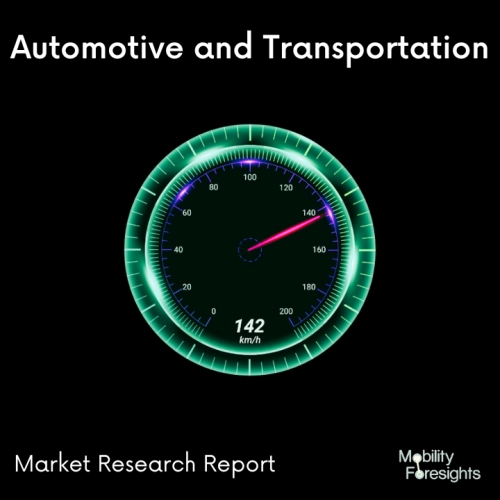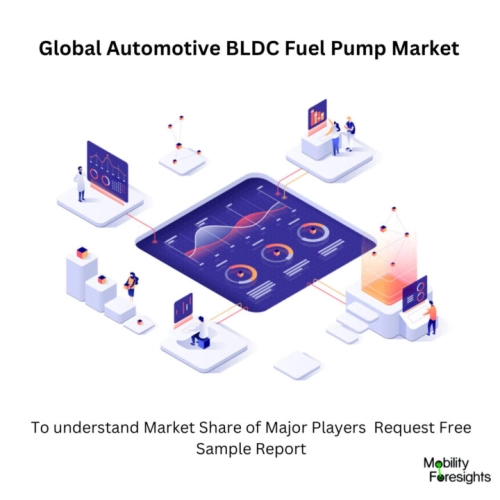
- Get in Touch with Us

Last Updated: Apr 25, 2025 | Study Period: 2023-2030
Modern fuel distribution systems for automobiles employ an essential part called an automotive Brushless Direct Current (BLDC) fuel pump. It is essential for reliably and efficiently transferring gasoline from the fuel tank to the engine.
BLDC fuel pumps, as opposed to conventional gasoline pumps, use brushless motor designs, which have several benefits including greater durability, reduced noise levels, and increased fuel economy.
The electric motor, impeller, intake, and outlet are some of the essential parts of the BLDC fuel pump. Brushes and commutators, which are prone to wear and cause friction, are not required for the brushless motor's operation since it uses electronic commutation instead.
Due to the fuel pump's ability to produce precise and constant fuel flow, the engine will run at its best.Fuel is drawn from the tank and delivered to the engine at the appropriate pressure by the impeller, which is powered by the BLDC motor.
The gasoline pump may be seamlessly incorporated into the vehicle's fuel system thanks to the connectors on its inlet and output.The exceptional dependability and prolonged longevity of BLDC fuel pumps are well recognised.
It is unnecessary to do routine maintenance since there are no brushes or commutators, which lowers the risk of mechanical failures. Additionally, the brushless motor's lower energy requirements improve overall fuel economy and help minimise pollution.

The Global Automotive BLDC Fuel Pump Market accounted for $XX Billion in 2022 and is anticipated to reach $XX Billion by 2030, registering a CAGR of XX% from 2023 to 2030.
The new BLDC fuel pump from Bosch was introduced for petrol engines. The pump is intended to increase fuel economy and lower pollutants.
Denso introduced their brand-new BLDC diesel fuel pump. The pump is intended to increase fuel economy and lower pollutants.
For hybrid and electric cars, Delphi has introduced a new BLDC fuel pump. The pump is intended to increase fuel economy and lower pollutants.
| Sl no | Topic |
| 1 | Market Segmentation |
| 2 | Scope of the report |
| 3 | Abbreviations |
| 4 | Research Methodology |
| 5 | Executive Summary |
| 6 | Introduction |
| 7 | Insights from Industry stakeholders |
| 8 | Cost breakdown of Product by sub-components and average profit margin |
| 9 | Disruptive innovation in the Industry |
| 10 | Technology trends in the Industry |
| 11 | Consumer trends in the industry |
| 12 | Recent Production Milestones |
| 13 | Component Manufacturing in US, EU and China |
| 14 | COVID-19 impact on overall market |
| 15 | COVID-19 impact on Production of components |
| 16 | COVID-19 impact on Point of sale |
| 17 | Market Segmentation, Dynamics and Forecast by Geography, 2023-2030 |
| 18 | Market Segmentation, Dynamics and Forecast by Product Type, 2023-2030 |
| 19 | Market Segmentation, Dynamics and Forecast by Application, 2023-2030 |
| 20 | Market Segmentation, Dynamics and Forecast by End use, 2023-2030 |
| 21 | Product installation rate by OEM, 2023 |
| 22 | Incline/Decline in Average B-2-B selling price in past 5 years |
| 23 | Competition from substitute products |
| 24 | Gross margin and average profitability of suppliers |
| 25 | New product development in past 12 months |
| 26 | M&A in past 12 months |
| 27 | Growth strategy of leading players |
| 28 | Market share of vendors, 2023 |
| 29 | Company Profiles |
| 30 | Unmet needs and opportunity for new suppliers |
| 31 | Conclusion |
| 32 | Appendix |